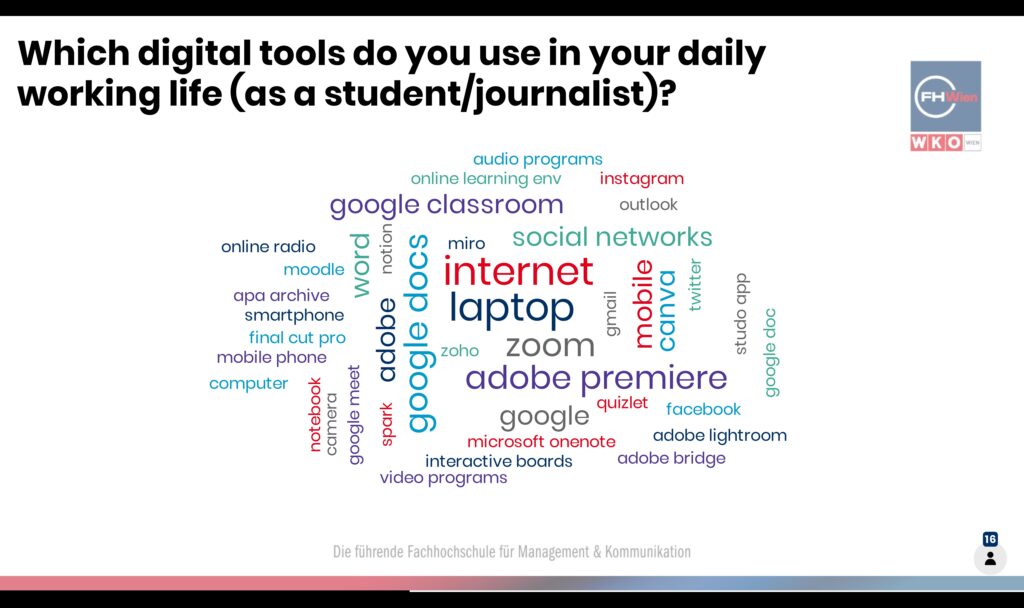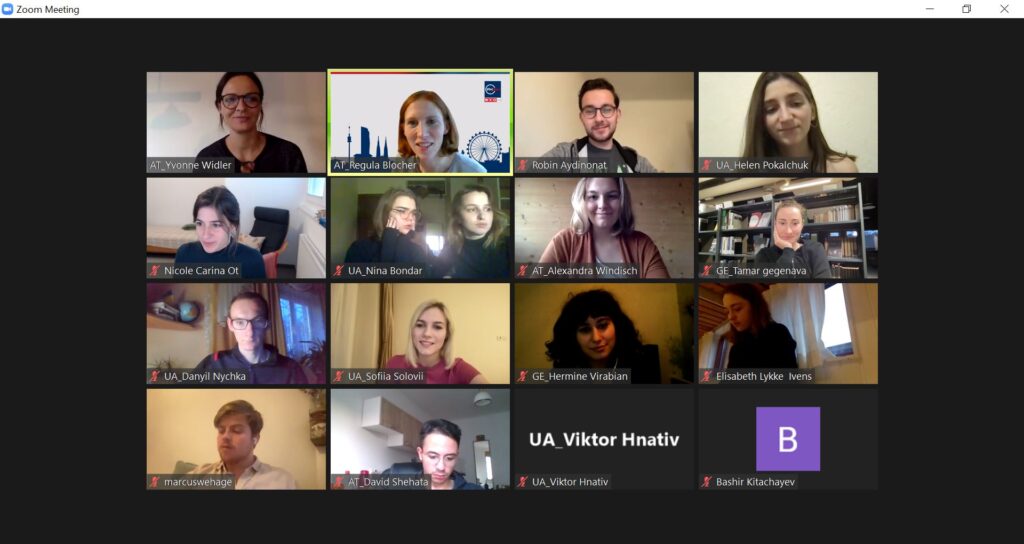On November 20, 2021, the International School of Multimedia Journalism (ISMJ) held a project day on the topic of “Digitalisation of the Working World”. In addition to exciting insights into the international joint program, the participants learned about current tools in multimedia journalism and implemented their first small multimedia projects.
But fISMJ as a window to Europe
For many young journalists from Ukraine and Georgia, the International School of Multimedia Journalism (ISMJ) means inspiration, a window to Europe and confrontation with a completely different working world. For most participants from Austria and Denmark, the ISMJ is a voyage of discovery into an unknown world. But for all participants, regardless of where they come from, the ISMJ means overcoming one’s own limits and growing in the face of challenges.
In order to live up to this claim even in times of a pandemic and to further deepen the cooperation with the partner countries, a transnational online project day on the topic of “Digitalisation of the world of work” took place for the first time this year. This online ISMJ served as preparation for the regular ISMJ 2022, which will be held again in July next year in face-to-face classes and where the participants can again work together on multimedia reports.
Focus on digital competencies
During the one-day project day of the Online-ISMJ 2021, the students were given an insight into the ISMJ and got to know the responsible persons, lecturers and other participants from the partner universities. The focus was on the acquisition of competences by the participants: The work in international teams using current digital tools; the development of basic journalistic skills such as research or interviewing as well as the creation of journalistic multimedia reports with the online tool Pageflow.io.
After working on the topic and a brief introduction to the tools used, the students received an introduction to the basics of multimedia journalism and storytelling with the help of practical examples. For their own multimedia reports, the participants worked in small groups separated by country due to the online setting and the time difference.
   
In their multimedia reports, the participants dealt with current questions about the digitalisation of the world of work and its consequences. |
The consequences of digitalisation
In the resulting works, the students dealt with a variety of current issues around the blurring of spatial and temporal boundaries of work. They showed the limits of digitalisation, for example, by means of public authority tasks, and dealt with the challenges of studying almost exclusively online in many countries.
“2019 was the beginning of the zoom classes and the ending for the face to face classes.”
The multimedia reports thus also reflected the reality of the students and gave the other participants an insight into the current study situation in other countries. In a final round of presentations, the individual works were presented and learning outcomes were discussed together. Despite the dense agenda for a single day, the participants agreed on one thing at the end: they were looking forward to the next round in summer 2022, but this time in presence.
Further details about the ISMJ and all previous project work can be found on the project page at https://multimediajournalism.eu/.
About the International School of Multimedia Journalism (ISMJ):The ISMJ is run by the Study Program Journalism & Media Management of the FHWien University of Applied Sciences for Management & Communication together with the Ukrainian Catholic University Lemberg (UCU School of Journalism). It is a joint programme that networks Austrian and Ukrainian journalism students and promotes an understanding of international media systems and the media landscape in both countries. In the second year of its existence, the International School of Multimedia Journalism has received two further project partners: the Danish School of Media and Journalism (DMJX) and the Georgian Institute of Public Affairs (GIPA). |


